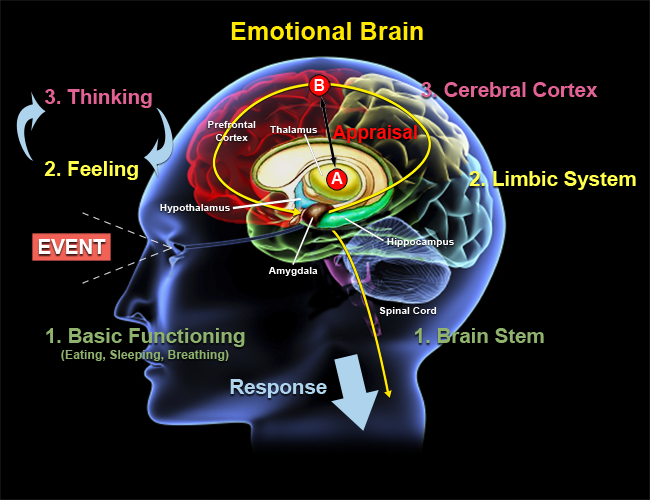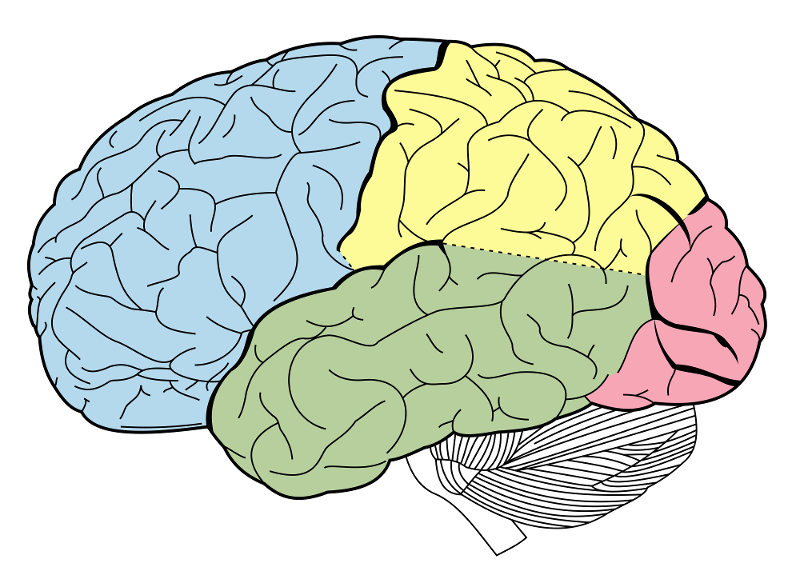
This temporary memory storage area operates by allowing us to keep “in mind” such information as the sum of digits that need to be carried over to the next column when performing addition.
The prefrontal area houses the neural circuitry for abstract thought and allows us to concentrate and stay on task, while storing information in the mental sketch pad of working memory.
PART OF THE BRAIN THAT CONTROLS EMOTION FULL
It matures more slowly than any other brain area and reaches full maturity only after the teen years have passed. It is the most highly evolved brain region, bigger proportionally in humans than in other primates, and makes up a full third of the human cortex. The prefrontal cortex is so sensitive to stress because of its special status within the hierarchy of brain structures. In a brain scanner, the riot of activity in the prefrontal cortex gives a clue to just how vulnerable the brain’s master controller is. What actually happens behind the human skull’s frontal bone remained a mystery until the relatively recent arrival of neuroimaging techniques. After World War II, investigators analyzed why pilots who were highly skilled in peacetime made simple but fatal mistakes in maneuvering their craft during the heat of battle. Why we lose it has fascinated scientists for decades. They are now not just trying to understand what happens in your head when you freeze but also developing behavioral and pharmaceutical interventions to help you keep your composure. The growing understanding that acute stress can severely compromise the function of higher “executive” areas in the human brain has drawn the interest of investigators. As the older parts take over, we may find ourselves either consumed by paralyzing anxiety or else subject to impulses that we usually manage to keep in check: indulgence in excesses of food, drink, drugs or a spending spree at a local specialty store. In essence, it transfers high-level control over thought and emotion from the prefrontal cortex to the hypothalamus and other earlier evolved structures.

PART OF THE BRAIN THAT CONTROLS EMOTION SERIES
The new research demonstrates that acute, uncontrollable stress sets off a series of chemical events that weaken the influence of the prefrontal cortex while strengthening the dominance of older parts of the brain. When things are going well, the prefrontal cortex acts as a control center that keeps our baser emotions and impulses in check.

The prefrontal cortex is the part of the brain that evolved most recently, and it can be exquisitely sensitive to even temporary everyday anxieties and worries. Now research reveals an unexpected role for the prefrontal cortex, the area immediately behind the forehead that serves as the control center that mediates our highest cognitive abilities-among them concentration, planning, decision making, insight, judgment and the ability to retrieve memories. Older textbooks explained that the hypothalamus, an evolutionarily ancient structure lodged at the base of the brain, reacts to stress by triggering the secretion of a wave of hormones from the pituitary and adrenal glands, which makes the heart race, elevates blood pressure and diminishes appetite. Stress, in fact, can cripple our most advanced mental faculties, the areas of the brain most developed in primates. The response to stress is not just a primal reaction affecting parts of the brain that are common to a wide array of species ranging from salamanders to humans. In recent years a different line of research has put the physiology of stress in an entirely new perspective. For decades scientists thought they understood what happens in the brain during testing or a battlefront firefight.


 0 kommentar(er)
0 kommentar(er)
